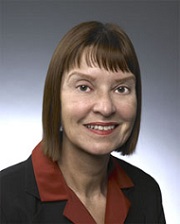HCI International 2015
Los Angeles, CA, USA
2-7 August 2015
Tuesday, 4 August 2015, 09:00 - 12:30
Anna Wichansky (short bio)
Oracle, USA
Objectives:
The objective of this tutorial is to teach you relatively quick and statistically clean methods to conduct summative usability testing on software. Such testing is conducted when the software is in beta or near-production release. The methods reflect real-world laboratory and remote testing processes, and are adapted from ISO25062:2006, Common Industry Format for Usability Testing.
Content:
- Introduction:
- What is usability testing: ISO definition, key elements, benefits
- Formative vs. summative usability testing and reasons for each type
- Usability test planning:
- Specifying product goals: CISU-R, context of use, stakeholders
- Identifying users: target groups, selection criteria, ISO conformance
- Specifying tasks: importance of goals, task validity, examples of task step click paths
- Core performance & satisfaction matrix: ISO conformance, use of "before" data, and expert benchmarks
- Importance of controls and repeatability of method; reliability
- Moderator script
- Participant guide
- Audio/video recording, automatic data collection
- Test design and data analysis plan
- Group exercise: Instructor-led review of a sample test plan
- Participant recruitment:
- sourcing users
- sample sizes
- screening questionnaires
- scheduling tips
- Conducting a usability test:
- Discount usability testing and customer feedback session definitions
- Test set-up: test environment, materials, product readiness
- Moderator introduction: test objectives, informed consent
- Group exercise: Instructor-led review of sample moderator script
- Running the participant: importance of consistency within and between participants
- Ending the test: participant closure, payment
- Role Play Exercise: Instructor leads small groups of students playing common testing roles in two tasks, using a released tablet application & prepared materials, followed by group discussion
- Data collection and recording methods
- On-line screen recording
- Video and audio recording
- Automatic performance data collection
- Manual methods
- Surveys
- Analyzing usability test data:
- Comparison to goals
- Comparison to benchmarks
- Use of "before" data
- Use of quotes
- Effective reporting strategies for usability test results:
- developers and stakeholders
- customers
- Tips & Tricks for effective usability testing:
- ethical considerations
- providing assists
- managing stakeholder expectations and perceptions
- correcting design problems
- Mobile Testing
- Medical Product Testing
- Public domain usability testing resources
- Questions & Answers
Benefits:
This course will provide methods to answer the question of how usable a given product is, in both quantitative and qualitative terms. It will give students effective strategies and standards for planning and scheduling usability tests, collecting and analyzing the data, and reporting to customers, developers and other stakeholders. The hands-on exercises give a "feel" for what it is like to conduct a real test. The instructor brings a wealth of industrial research experience to answer student questions about specific challenges of real-world usability testing.
Target Audience:
Intermediate-level UX research professionals, software designers, product managers, marketing managers, and consultants will benefit most. This course assumes students are familiar with various formative testing methods and are ready to go to the next level of usability assessment methodology.
Relevant links:
Bio Sketch of Presenter:



